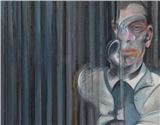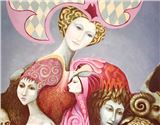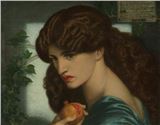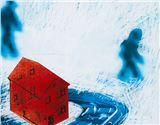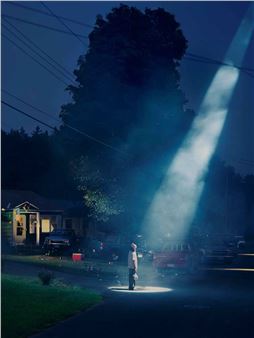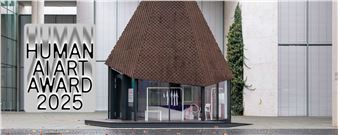Everything at Once: Postmodernity, 1967-1992
The year 1967 marked the beginning of our present: Modernism, which had presumed that everything could be sorted out through equal housing, furniture and rights for all, was abandoned, and from its ruins a bizarre, eccentric world was born. Architects declared the amusement park the new ideal city; designers shook off the yoke of good taste, and the conflict between the two dominant political systems gave way to the struggle for self-realisation. New media synchronised the globe, and images became the arena in which contests for style and recognition were waged.
Showcasing spectacular examples of design, architecture, cinema, pop, philosophy, art and literature, the exhibition chronicles the dawn of the information society, the unleashing of the financial markets, the great age of subcultures, disco, punk and techno-pop, shoulder pads and Memphis furniture. It also chronicles the sudden surge in the construction of museums, the new temples of art and culture, to which we owe the largest exhibit, the Bundeskunsthalle itself. When the Bundeskunsthalle opened in 1992, the Cold War was over, and Francis Fukuyama published his famous book, in which he proclaimed ãthe end of historyã as such. Thirty years later, it is clear that history did not come to an end, and Postmodernism is once again a matter of considerable debate. Holding up a mirror to the present, the exhibition homes in on our current conflicts ã from right-wing populism to identity politics. It allows us to ask, from the distance of a generation, what time we are actually living in. Is Postmodernity really over ã or are we in the middle of it?

Recommended for you
The year 1967 marked the beginning of our present: Modernism, which had presumed that everything could be sorted out through equal housing, furniture and rights for all, was abandoned, and from its ruins a bizarre, eccentric world was born. Architects declared the amusement park the new ideal city; designers shook off the yoke of good taste, and the conflict between the two dominant political systems gave way to the struggle for self-realisation. New media synchronised the globe, and images became the arena in which contests for style and recognition were waged.
Showcasing spectacular examples of design, architecture, cinema, pop, philosophy, art and literature, the exhibition chronicles the dawn of the information society, the unleashing of the financial markets, the great age of subcultures, disco, punk and techno-pop, shoulder pads and Memphis furniture. It also chronicles the sudden surge in the construction of museums, the new temples of art and culture, to which we owe the largest exhibit, the Bundeskunsthalle itself. When the Bundeskunsthalle opened in 1992, the Cold War was over, and Francis Fukuyama published his famous book, in which he proclaimed ãthe end of historyã as such. Thirty years later, it is clear that history did not come to an end, and Postmodernism is once again a matter of considerable debate. Holding up a mirror to the present, the exhibition homes in on our current conflicts ã from right-wing populism to identity politics. It allows us to ask, from the distance of a generation, what time we are actually living in. Is Postmodernity really over ã or are we in the middle of it?
Artists on show
- Aldo Rossi
- Alejandro Jodorowsky
- Alessandro Mendini
- Andy Warhol
- Ant Farm
- Arata Isozaki
- Architectural Group SITE
- Archizoom
- Azzedine Alaïa
- Bodys Isek Kingelez
- Borek Sipek
- Bret Easton Ellis
- Brian O'Doherty
- Cesare Casati
- Charles Jencks
- Cindy Sherman
- Claude Montana
- Comme des Garçons
- David Byrne
- David Harvey
- David Hockney
- David Lynch
- Denise Scott Brown
- Donna J. Haraway
- Ed Ruscha
- Elaine Sturtevant
- Emanuele Ponzio
- Ettore Sottsass
- Franco Moschino
- Frank Gehry
- Gaetano Pesce
- General Idea
- Gianni Versace
- Gilles Deleuze
- Godfrey Reggio
- Gordon Matta-Clark
- Grace Jones
- Gustav Peichl
- Hans Hollein
- Harumi Yamaguchi
- Haus-Rucker-Co
- Heinz Bienefeld
- Issey Miyaké
- J.G. Ballard
- James Stirling
- James Wines
- Javier Mariscal
- Jean Paul Gaultier
- Jean Paul Goude
- Jenny Holzer
- Karl Lagerfeld
- Kengo Kuma
- Kevin Roche
- Leonard Koren
- Linder Sterling
- Louise Lawler
- Lucinda Childs
- Madelon Vriesendorp
- Makoto Nakamura
- Marshall McLuhan
- Martin Margiela
- Martine Bedin
- Masanori Umeda
- Matteo Thun
- Memphis Groupã
- Michael Mann
- Michele de Lucchi
- Mike Graves
- Nam June Paik
- Nathalie du Pasquier
- Neville Brody
- Nigel Coates
- Oswald Mathias Ungers
- Paco Rabanne
- Paolo Portoghesi
- Pedro Almodovar
- Peter Eisenman
- Peter Shire
- Philip Johnson
- Rainer Werner Fassbinder
- Rem Koolhaas
- Renzo Piano
- Ricardo Bofill
- Richard Meier
- Ridley Scott
- Robert A. Wyatt
- Robert Venturi
- Roland Barthes
- Sally Potter
- Shin Takamatsu
- Stanley Tigerman
- Studio 65
- Trisha Brown
- Vivienne Westwood
- Walter Pichler
- Yellow Magic Orchestra
- Yvonne Rainer
Contact details

Related articles
The year 1967 marked the beginning of our present: Modernism, which had presumed that everything could be sorted out through equal housing, furniture and rights for all, was abandoned.

 ARTISTS
ARTISTS
